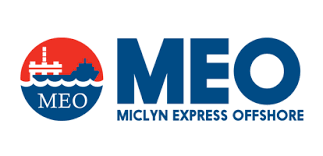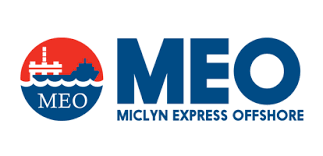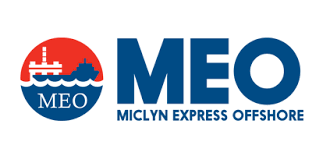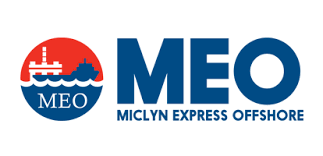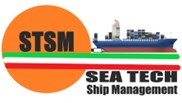Title Page
1. GENERAL INFORMATION
General information
-
Ship's name
-
Date of audit
-
Date of report
-
Auditor
-
Persons interviewed (name + function)
-
Referenced documents/publications
-
Add media
2. RESPONSIBILITIES
-
Availability of updated National and local regulations from the Coastal State and Port Authorities.
-
Agreement by Hull and Machinery Insurers.
-
Availability of Manufacturer’s recommendations, specifically for machinery equipment on long-term protection and maintenance of their equipment.
3. CHOOSING A LAY-UP CONDITION
-
The extent of shelter from open seas, strong winds, swell, surge and strong currents
-
The proximity to shipping routes or open roadstead anchorages
-
The proximity to known tropical cyclone or hurricane areas, moving ice, etc.
-
The proximity to wrecks, submerged pipes, cables and other bottom projections
-
The proximity to corrosive waste or effluent discharges
-
The water depth with regard to keel clearance at extreme low tides versus excessive
-
water depth with regard to anchor chain limitations
-
The characteristics of the seabed with regard to anchor-holding capability
-
The availability of local tug assistance
-
The characteristic of the windage area in relation to changes in wind, tidal and swell conditions
-
The weaknesses and limitations of the specific type, design and condition of mooring equipment, as well as access to and the readiness of additional moorings, if required
-
The suitability of the mooring pattern with respect to the number of lines, lengths, angles, leads, and the ability to maintain even tensions on the lines
-
The capacity and capability of the crew during normal and adverse weather conditions
-
The reliability and frequency of local weather forecasts and warnings
-
The proximity to other vessels and related traffic hazards in vicinity
-
The scope of local emergency preparedness plans and services for the potential fires, flooding, security incidents, mooring failures or medical emergencies, and
-
The risk of theft and piracy.
4. SAFETY CONDITIONS
-
Safety conditions to be kept throughout the lay-up period include but not limited to:
-
Power supply
-
Manning
-
Fire protection and fire fighting
-
Protection against explosion
-
Protection against flooding
-
Prevention of failure of mooring or anchor
-
Safety equipment
-
Emergency power
5 MOORING ARRANGEMENTS
-
SHIPS MOORED IN GROUPS
When ships are to be laid–up in groups, mooring arrangements should be in with the following additional requirements: -
When ships are to be laid–up in groups, mooring arrangements should be in with the following additional requirements:
-
Adjacent ships should be similar size to avoid differential surging motions and they should be ballasted to similar freeboards to permit breast lines to be directly led.
-
The fore and aft direction of each vessel should be parallel to the prevailing string winds.
-
Breast mooring lines should be provided, sufficiently tensioned and of similar stretch characteristics.
-
Sufficiently sized fendering arrangements be provided alongside at areas of possible contact with other ships of shoe structures.
-
If the auxiliary engine on one vessel is used to supply power to other vessels, it is preferably that all other vessels are electrically connected to avoid stray currents.
6 CLASS STATUS DURING LAY-UP
-
Class Notation & Status of Layup vessels
-
For vessel in cold layup, are the ISM & ISM certificates withdrawn?
7 INSURANCE ISSUES
PROTECTION AND INDEMNITY COVER
-
Does local port authorities require a letter from local P&I club representatives to confirm that the laid-up vessel is covered for port risks (e.g. oil pollution, wreck removal, and salvage costs)?
HULL AND MACHINERY COVER
-
Opt for a laid-up return of premium; or
-
With the underwriter’s agreement, cancel the trading policy and substitute this with a ports risk policy
8 MANNING LEVELS
Does the risk assessment account for the following onboard scenarios:
-
Fire
-
Flooding
-
Severe weather, and
-
Security breach
9 RECORD KEEPING
SYSTEMS
-
Are fire extinguishers should be regularly inspected and where foam or CO2 systems are installed, the system should be maintained in a fully operable condition?
-
Are all fire dampers inspected to be freely operable and regularly greased whereas dampers not required for essential ventilation should be closed?
-
Is the emergency fire pump regularly inspected and maintained in a fully working condition to ensure its reliable operation?
-
Is there an international shore connection retained in an accessible position?
-
If a laid-up vessel is in ‘electrical dead ship’ condition, bilge and fire alarms must be independently powered. Alternately the lay-up service provider to have 24 x 7 watchmen who will take periodic rounds and notify shore support for assistance in the event of fire or leakage?
PROTECTION AGAINST EXPLOSIONS & FIRE
-
Fire sources be removed or minimized as far as practical.
-
All decks, accommodation and machinery spaces be cleaned and all flammable or combustible materials should be removed or properly stored.
-
Bilges kept dry and clean.
-
All cargo tanks, pump rooms and cofferdams be dry and clean.
-
Hot work be carried out only with a valid hot work certificate and appropriate safety precautions in place.
-
Valves or cocks to oil tanks in machinery spaces be closed and drip trays should be cleaned.
-
If machinery be kept in operation during lay-up for power supply quick-closing devices for fuel oil valves should be checked.
-
Wire gauze in air pipes to fuel tanks and spark arresters in exhaust pipes to be in proper condition.
-
All fire dampers in ventilators are either to be closed or clearly marked and kept easily closable.
-
Fire doors and watertight doors be kept closed.
FIRE DETECTION & FIRE FIGHTING EQUIPMENT
-
Fixed firefighting installations be kept ready for operation and checked regularly in case the vessel is manned during the lay-up.
-
Fire mains are ready for use.
-
Power supply to be available for operating the fire pumps. These should be checked and run regularly.
-
Emergency fire pumps are ready for use and to be checked and run regularly.
COMMUNICATION
-
Are there reliable means of 24 hours’ communication available for immediate contact for local assistance or rescue facilities?
EMERGENCY CONTIGENCY PLAN
-
s there an emergency contact list of the vessel, including various service provider, yard and local representative’s details is provided and updated?
-
SECURITY
-
• Has the Business Units Operation Manager conducted a threat assessment of the area where the vessel shall be for the lay-up period? The Threat Assessment should consider the area of Lay Up, alongside or on mooring.
11 SAFETY EQUIPMENT, SYSTEMS AND ALARMS
9.1 SOPEP materials (SOPEP, SM-7.1)
-
Check if the list of minimum SOPEP material in the SOPEP Manual is available on board.
-
Findings
-
Add media
9.2 SOPEP drills and exercises (SM-7.1, SM-9.2)
-
Check that SOPEP drills are carried out at least every thee months
-
Findings
-
Add media
9.3 Garbage segregation (Garbage Management Manual)
-
Check that garbage is collected separately. All ships to have colored bins on board.
-
Findings
-
Add media
9.4 Discharge records (Garbage Management Manual)
-
Verify that Garbage record sheets are kept as appropriate on a monthly basis (last version to include latest MARPOL requirements from 2013)
-
Findings
-
Add media
12 PROTECTION DURING LAY-UP
WET OR DRY BALLAST TANKS
-
Are the ballasted tanks in either a wet or dry conditions?
INTERNAL HULL PROTECTION
-
Holds, cargo tanks and other hatch covers, watertight doors and closing appliances are securely closed and sealed unless required for access or ventilation.
-
Empty tanks, holds, small machinery spaces, storage spaces, lockers and other similar areas are kept in a dry condition.
-
Fuel oil bunker tanks are kept full or cleaned and gas freed. When kept full, a regular check for liquid loss should be made.
13 ACCOMMODATION AREAS AND OUTFITTING
ACCOMMODATION AREAS
-
Are the galley exhaust fans and grease trap regularly inspected and cleaned.
-
Are the ships’ linen and napery stored in one single dry compartment with mattresses stowed on their edge to assist free air circulation?
-
Are all provision room, cabin and cabinet doors secured in the open position?
-
Are water services in all unoccupied areas shut off and drained?
-
Are all sanitary fittings and toilet bowls sealed?
OUTFITTING
-
Electrical on deck and telephones, telegraphs, etc., covered and sealed?
-
All loose navigational equipment, chronometers, sextants, etc., not required during the lay-up period are removed and placed in locked storage?
-
The engine workshop, electrician’s workshop and deck workshop tools and loose equipment are cleaned, greased and put into locked storage?
-
All loose gear, lifeboat gear, rescue boats and similar equipment are removed, protectively coated and placed in locked storage, except for retained safety equipment?
-
Medical and lifeboat perishables are removed ashore (or to another vessel, as required)?
-
Any food stuffs, pyrotechnics (particularly expiry date stamped), cotton waste, matches, etc., not are removed ashore?
-
Broached drums of chemicals or waste oils are removed ashore?
14 MACHINERY
GENERAL MACHINERY (Not Applicable for Hot Layup)
-
For cold lay-up, main and auxiliary engine and incinerator exhausts are closed off with ‘top hats’ to prevent rain or moisture building up in the exhaust trunkings etc.?
-
Suitable warning signage provided at local and remote control stations?
-
All bilge valves cleaned, overhauled and proved operable?
-
Tank tops in engine rooms, boiler rooms, pump rooms, and hold areas are hosed down, and bilges cleaned and dried?
-
All liquid leaks repaired?
-
Air conditioning and refrigerant systems are pumped down to the liquid receiver and all valves secured and tagged with a note of the liquid level?
-
All lubricating oil in systems and used oil storage tanks are thoroughly centrifuged at temperatures above 82°C (180°F) to kill any microbes.
-
Samples are taken and analysed by the oil suppliers to confirm stability, freedom from moisture and microbiological contamination?
-
Contaminated oil are renewed?
-
All sea inlet valves and overboard discharge valves spindles greased and valves closed?
-
Are the sea suction openings (except for emergency fire pump) blanked at the shell opening or protected with a slow acting biocide?
-
Service tanks for fuel oil are filled with centrifuged oil?
-
Inlet and outlet valves on oil tanks that are not in use are shut and their hand wheels removed and wired to valves?
-
Air receivers are drained and mopped dry?
-
If dehumidifiers are used, are the air bottles with the manhole covers removed? Steering gear are power operated hard-over to hard-over weekly and stopped with a tiller amidships?
-
The rams, bearings and rudder carrier are greased?
-
Machinery space ventilators are closed and sealed?
DIESEL MACHINERY (Hot & Cold)
-
A lay-up plan outlining the preservation and maintenance routines during the lay-up period are developed and available.
LAY UP LOG / TRACKING REGISTER (Hot & Cold)
-
Main engine crankcases are supplied with vapour corrosion inhibitor with reference to the engine maker's recommendation for laying up?
-
Water cooled systems for the main engine are completely drained, washed with fresh water and left open to atmosphere?
-
Air starting valves are dismantled and lubricated?
-
Fuel valves are removed, overhauled and stored outside the engine?
-
All bright work are protected with a smear of grease or oil?
-
Engines including all shafting are turned weekly to circulate oil (e.g. one complete turn plus one quarter turn)?
-
Cylinder lubricants are operated by hand before turning?
-
Diesel generators are maintained in operational condition and operated once per week?
-
The emergency generator are operated on a weekly basis under load?
WATER SYSTEMS (Hot & cold)
-
Are all SW and FW systems and pumps which are not in use are washed with fresh water, drained and left open to the atmosphere?
-
Any pumps, for which power is not available, are turned weekly by hand?
PROPELLER AND SHAFTING (hot& cold)
-
For Cold Layup Is there a routine system of regularly turning the shafting to prevent brinnelling of bearings should be instigated for ships in long-term lay-up?
-
At the time cold lay-up, stern tube oil are replaced with a fresh charge and the condition of the oil should be monitored regularly.
-
During Hot layup, propulsion shafting should be regularly operated using the main engines when a vessel is in a shorter lay- up.
16 ELECTRICAL, ELECTRONIC AND SOFTWARE SYSTEMS
ELECTRONIC AND SOFTWARE SYSTEMS
-
Equipment containing printed circuit boards are kept dry and free of moisture, and excessive temperatures avoided?
-
Software back-ups are made available for reactivation should computers fail to boot up or restart on their own?
ELECTRICAL EQUIPMENT AND MACHINARY
-
Are de-humidification techniques or VCI/desiccant employed to prevent condensation within electro-technical systems where degradation could occur if the environmental conditions are inappropriate (i.e. these systems may include: Main and emergency generators and switchboards; Converters, harmonic filters and transformers; radio and navigational equipment, and engine, boiler and wheelhouse control consoles)?
-
Electrical equipment on deck should be covered and sealed, with a suitable method in place to ensure that any moisture within the sealed equipment is absorbed, such as the use of a desiccant material?
-
Batteries are maintained in accordance with the recommendations from the original equipment manufacturer (OEM)?
-
Are the electrolyte topped up?
-
Lead acid batteries are either removed from the vessel, or trickle-charged on board at a rate recommended by the battery manufacturer?
-
Li-Io batteries are laid up and maintained in accordance with the requirements of the OEM?
-
All circuits supplied from the main and emergency switchboards and transitional section boards are isolated in turn?
17 HIGH VOLTAGE INSTALLATIONS
-
Are HV breakers racked into their circuit earth positions during lay-up?
19 SPARES
-
Removal of spares from laid-up vessel recorded and controlled?
-
If the vessel keeps spare main shafts such as turbo charger, pumps, etc., bolted and hung from bulkheads, it may be prudent before a long lay-up to rotate these through 180 degrees to balance distortion (‘age droop’).
20 LAY-UP MAINTENANCE PROGRAMME
-
Lay-up maintenance programme is submitted to the classification society including the safety conditions to be kept throughout the lay-up period, the measures taken to preserve the maintenance of the ship throughout the layup period, the survey requirements to be complied with for lay-up, maintenance of class and reactivation?
22 REPORTS AND CHECKLISTS
-
Monthly reports from the crew or contractors on the findings of scheduled inspections and tests should contain details of any essential remedial work considered necessary to repair faults or restore adequate lay-up protection?
-
Periodical consolidated summary of lay-up reports detailing such repairs (or decisions to postpone repairs until the time of reactivation os prepared by Roving/Technical Superintendents and for submission to Business Unit managers and COO.
